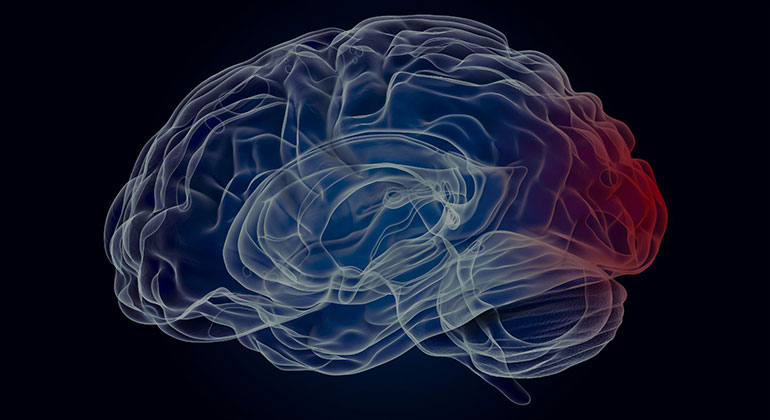AMPLab

Problem
Traditional interventions focus on painful tissue. They can be helpful but have limited efficacy and can involve multiple side effects and health risks (e.g., addiction, overdose).
Solution: A New Tool Belt
Alternative or complementary brain-focused evidence-based approaches involve:
- Virtual reality
- Noninvasive brain stimulation
- Wearable devices
We are a hybrid clinical and research innovation center that both investigates and implements advanced neurotechnologies that can help with chronic pain. We use evidence-based principles and create personalized clinical programs. The technologies we deploy help modulate the central nervous system to reduce the effect of chronic pain.
Disclaimers: Some of these therapies are not approved by the U.S. Food and Drug Administration (FDA) as pain-relief treatments. Not all patients respond equally to these therapies. We do not guarantee pain relief. As with all forms of medical treatment, some patients recover and others do not. A detailed evaluation will determine if these approaches are a good option, and what is the optimal protocol for your individual needs.
Technologies We Use
We use a number of technologies in our research and clinical care. These include:
- Noninvasive Brain Stimulation with rTMS: rTMS stands for repetitive transcranial magnetic stimulation. It has been shown to be a safe and well-tolerated procedure that can help patients with neurological and psychiatric disorders.
- It has been approved by the FDA as treatment for depression in adults.
- Although it is not currently FDA-approved for pain relief treatment, noninvasive brain stimulation with rTMS has shown promising results in multiple clinical trials. Trials reported strong, Level A evidence of the efficacy of high-frequency rTMS of the primary motor cortex for neuropathic pain.
- A detailed evaluation will determine if rTMS is safe.
- Immersive Virtual Reality: This computer-generated 3D environment is displayed in a head-mounted device that surrounds the user with a 360-degree virtual scene. Scientific evidence has shown that video reality (VR) can be used for pain modulation in several ways. It works by:
- Distracting the brain's attention away from painful sensations
- Eliciting a meditative state through dynamic breath work and enteroception (mindfulness) exercises
- Rebuilding a healthy mind-body connection through multisensorial environments (using embodiment of virtual body parts to modulate areas of the brain involved with pain processing)
- Supporting motor learning and neurological reorganization at the brain level
- Dessintey: Provides intensive visuomotor stimulation so people with some neurological deficits (after stroke or complex regional pain syndrome) can improve their sensory-motor skills.
- TrainPain: Delivers sensory rehabilitation through an interactive game experience, so patients can reduce the effect of chronic, persistent pain.
Additional Digital Health and Wellness Technologies
Mobile health technologies use mobile applications, gadgets, or wearable devices with a therapeutic purpose. At AMPLab, we incorporate the latest technologies in the treatment plan for a digital home experience. We use these therapies based on the patient’s clinical needs and personal goals.
Clinical Trials
We have concluded one clinical trial, in association with Sana Health, and have one active clinical trial in association with SimpleTherapy
Meet Our Team
Our multidisciplinary team works together to approach challenges with a new perspective.
Laura Tabacof, MD
An Assistant Professor of Rehabilitation and Human Performance, Dr. Tabacof works as a clinical research neuroscientist who leads clinical trials of novel technologies for people living with chronic pain. Dr. Tabacof believes that health technology will revolutionize pain treatment. She has led multiple industry-sponsored and government-funded trials for chronic pain and long COVID rehabilitation, leading to more than 15 publications and invited lectures at entities such as the World Health Organization, the U.S. Social Security Administration, and the National Academy of Sciences, Engineering, and Medicine. She trained in noninvasive brain stimulation at Harvard Medical School and completed a two-year postdoctoral fellowship in neuroscience at the Icahn School of Medicine at Mount Sinai. Dr. Tabacof holds a medical doctorate from Santo Amaro Medical School and a physical medicine and rehabilitation specialty degree from the University of São Paulo Medical School.
David Putrino, PT, PhD
Dr. Putrino is a physical therapist with a PhD in Neuroscience. He is the Director of Rehabilitation Innovation for the Mount Sinai Health System, and a Professor of Rehabilitation and Human Performance at the Icahn School of Medicine at Mount Sinai. He develops innovative rehabilitation solutions for adults and children who need better health care accessibility. He also works with high-performance partners such as Red Bull, the Brooklyn Nets NBA team, and the U.S. Olympic team to use evidence-based technologies to improve athletic performance. He is the author of Hacking Health: How to Make Money and Save Lives in the HealthTech World. In 2019, he was named "Global Australian of the Year" for his contributions to health care.
Jenna Tosto, PT, DPT
Jenna Tosto is a physical therapist with a doctorate in physical therapy (DPT) from Temple University. She received her BA in communication disorders and biopsychology from William Paterson University of New Jersey. During her studies, she completed clinical and research affiliations at NYU Langone Health, NewYork-Presbyterian/Weill Cornell Medical Center, and the U.S. Department of Veterans Affairs. Dr. Tosto previously served as a physical therapist at NYU Langone Rusk Rehabilitation, where she gained experience in adult acute care and adult inpatient neurological rehabilitation. Her areas of clinical and research interest include knowledge translation into neurological rehabilitation practice and the role of novel technology in motor recovery following neurological injury.
Michael Kypros, DPT
Michael Kypros is a physical therapist who helps people with neurological disorders such as stroke, traumatic brain injury, spinal cord injury, and Parkinson’s disease. He has treated patients in hospital and outpatient settings and is pursuing neurologic clinical specialist board certification. Dr. Kypros holds a doctorate in physical therapy from Wayne State University. He believes that neuroplasticity means the brain is always changing and adapting, allowing people to learn new motor patterns and regain patterns they thought had been lost. He is dedicated to improving his patients’ quality of life and enabling them to return to their prior function.